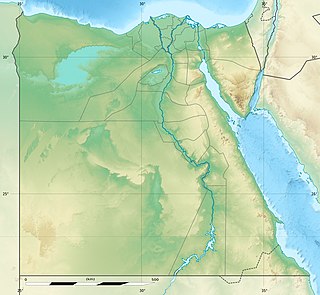 W
WThe Abu Agag Formation is a Turonian geologic formation in Egypt and Sudan. Indeterminate fossil ornithischian tracks have been reported from the formation.
 W
WThe Ambolafotsy Formation is a Turonian aged geological formation in the Diego Basin of Antsiranana Province in Madagascar. It is a mostly terrestrial unit deposited during a marine regression close to the shoreline. The dinosaur Dahalokely has been discovered in the formation.
 W
WThe Bayan Shireh Formation is a geological formation in Mongolia, that dates to the Late Cretaceous period. It was first described and established by Vasiliev et al. 1959.
 W
WThe Boquillas Formation is a geologic formation deposited during the Late Cretaceous in modern-day West Texas. It is typically composed of alternating marls and limestones with thin volcanic ash beds (bentonites). It was named for outcrops near the former Boquillas post office in Big Bend National Park. The term Boquillas Formation has been used for rocks that outcrop from Del Rio, Texas to as far west as Doña Ana County, New Mexico.
 W
WThe Budden Canyon Formation is the name of a sedimentary rock formation in California of Cretaceous (Berriasian-Turonian) age.
 W
WThe Cajones Formation is a Turonian geologic formation of central Bolivia. The fluvial sandstones in Amboró National Park preserve fossils of Yacarerani boliviensis. The formation is correlated with the Adamantina Formation of the Paraná Basin in Brazil and the Bajo de la Carpa Formation of the Neuquén Basin in Patagonia, Argentina.
 W
WThe Calcare di Bari is a Cretaceous geologic formation in Apulia, southeastern Italy. The formation comprises micritic limestones, in places karstified and dolomitized. Rudists and fossil ankylosaur, sauropod and theropod tracks have been reported from the 2,000 metres (6,600 ft) thick formation that was deposited in an inner carbonate platform environment towards the top dominated by rudist reefs.
 W
WThe Cardium Formation is a stratigraphic unit of Late Cretaceous age in the Western Canada Sedimentary Basin. It takes the name from the fossilized Cockle (Cardiidae) shells that it contains, and it was first described along the Bow River banks by James Hector in 1895. It is present throughout western Alberta and in northeastern British Columbia, and it is a major source of petroleum and natural gas.
 W
WThe Carlile Shale is a Turonian age Upper/Late Cretaceous series shale geologic formation in the central-western United States, including in the Great Plains region of Colorado, Kansas, Nebraska, New Mexico, North Dakota, South Dakota, and Wyoming.
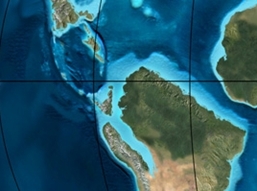 W
WThe Chipaque Formation (Spanish: Formación Chipaque, K2cp, Kc) is a geological formation of the Altiplano Cundiboyacense, Eastern Ranges of the Colombian Andes. The formation is also described as Gachetá Formation, named after Gachetá, in the area of the Llanos foothills of the Eastern Ranges. The predominantly organic shale formation dates to the Late Cretaceous period; Cenomanian-Turonian epochs and has a maximum thickness of 1,700 metres (5,600 ft). The formation, rich in TOC, is an important oil and gas generating unit for the giant oilfields Cupiagua and Cusiana of the Eastern Ranges as well as in the Llanos Orientales.
 W
WThe Conejo Formation (Spanish: Formación Conejo, K2C, Kscn) is a fossiliferous geological formation of the Altiplano Cundiboyacense, Eastern Ranges of the Colombian Andes. The uppermost unit of the Villeta Group, a sequence of shales and sandstones dates to the Late Cretaceous period; Turonian, Coniacian and Santonian epochs, and has a maximum thickness of 1,022 metres (3,353 ft).
 W
WThe Eagle Ford Group is a sedimentary rock formation deposited during the Cenomanian and Turonian ages of the Late Cretaceous over much of the modern-day state of Texas. The Eagle Ford is predominantly composed of organic matter-rich fossiliferous marine shales and marls with interbedded thin limestones. It derives its name from outcrops on the banks of the West Fork of the Trinity River near the old community of Eagle Ford, which is now a neighborhood within the city of Dallas. The Eagle Ford outcrop belt trends from the Oklahoma-Texas border southward to San Antonio, westward to the Rio Grande, Big Bend National Park, and the Quitman Mountains of West Texas. It also occurs in the subsurface of East Texas and South Texas, where it is the source rock for oil found in the Woodbine, Austin Chalk, and the Buda Limestone, and is produced unconventionally in South Texas and the "Eaglebine" play of East Texas. The Eagle Ford was one of the most actively drilled targets for unconventional oil and gas in the United States in 2010, but its output had dropped sharply by 2015. By the summer of 2016, Eagle Ford spending had dropped by two-thirds from $30 billion in 2014 to $10 billion, according to an analysis from the research firm Wood Mackenzie. This strike has been the hardest hit of any oil fields in the world. The spending was, however, expected to increase to $11.6 billion in 2017. A full recovery is not expected any time soon.
 W
WThe Favel Formation is a stratigraphic unit of Late Cretaceous age. It is present in southern Manitoba and southeastern Saskatchewan, and consists primarily of calcareous shale. It was named for the Favel River near Minitonas, Manitoba, by R.T.D. Wickenden in 1945.
 W
WFencepost limestone, Post Rock limestone, or Stone Post is a stone bed in the Great Plains notable for its historic use as fencing and construction material in north-central Kansas resulting in unique cultural expression. The source of this stone is the topmost layer of the Greenhorn Limestone formation. It is a regional marker bed as well as a valued construction material of the late 19th and early 20th centuries in Kansas. This stone was very suitable for early construction in treeless settlements and it adds a notable rust orange tint to the region's many historic stone buildings. But the most famous use is seen in the countless miles of stone posts lining country roads and highways. This status gives rise to such regional appellations as Stone Post Country, Post Rock Scenic Byway, and The Post Rock Capital of Kansas. This rustic quality finds Fencepost limestone still used in Kansas landscaping today.
 W
WThe La Frontera Formation (Spanish: Formación La Frontera, K2F, Ksf) is a geological formation, part of the Villeta Group, of the Altiplano Cundiboyacense and neighbouring areas of the Eastern Ranges of the Colombian Andes. The sequence of limestones and lydites dates to the Late Cretaceous period; Turonian epoch and has a maximum thickness of 206 metres (676 ft).
 W
WThe Galula Formation is a geological formation located south of Lake Rukwa in Tanzania, part of the Red Sandstone Group of the Rukwa Rift Basin. Along with the unconformably overlying Oligocene Nsungwe Formation. It is divided into two members, the lower Mtuka Member and the upper Namba Member.
 W
WThe Gaogou Formation is a Late Cretaceous (Cenomanian-Turonian) geologic formation in China. Fossil dinosaur eggs, the caenagnathid Beibeilong, and the titanosaur Baotianmansaurus have been reported from the formation.
 W
WThe Goio-Erê Formation is a geological formation in Brasil, it was deposited between the Turonian and Campanian stages of the Late Cretaceous. It primarily consists of sandstone and was deposited in a desert environment. It is known for its exceptional 3-D preservation of fossils, which include those of the pterosaurs Keresdrakon and Caiuajara as well as the lizard Gueragama.. It is laterally equivalent to the Rio Paraná Formation
 W
WThe Greenhorn Limestone or Greenhorn Formation is a geologic formation in the Great Plains Region of the United States, dating to the Cenomanian and Turonian ages of the Late Cretaceous period.
 W
WThe Guichón Formation is a Late Cretaceous geologic formation of the Paysandú Group in Uruguay. Dinosaur remains are among the fossils that have been recovered from the formation.
 W
WThe Hondita Formation is a fossiliferous geological formation of the Upper Magdalena Valley (VSM) and surrounding Central and Eastern Ranges of the Colombian Andes, extending from Cundinamarca in the north to Huila and easternmost Tolima in the south. The lowermost unit of the Güagüaquí Group, a sequence of sandy limestones and shales, dates to the Late Cretaceous period; Turonian epoch, and has a maximum thickness of 90 metres (300 ft).
 W
WThe Huiquanpu Formation is a geological formation in Shanxi and Hebei provinces, China, whose strata date back to the Late Cretaceous period. It predominantly consists of purple-red mudstone, with subordinate grey-white sandy conglomerates.
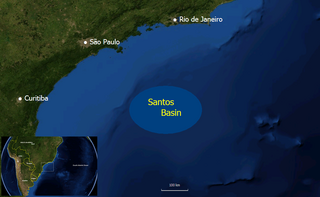 W
WThe Itajaí-Açu Formation is a geological formation of the Santos Basin offshore of the Brazilian states of Rio de Janeiro, São Paulo, Paraná and Santa Catarina. The predominantly shale with interbedded turbiditic sandstones formation dates to the Late Cretaceous period; Cenomanian-Maastrichtian epochs and has a maximum thickness of 2,000 metres (6,600 ft). The formation is a reservoir rock of the fields in the Santos Basin.
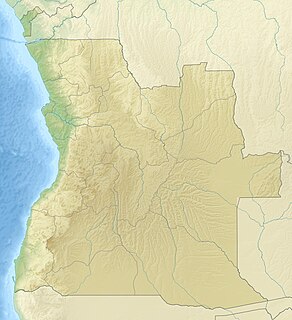 W
WThe Itombe Formation is a geological formation of the Kwanza Basin in Angola dating back to the Turonian stage of the Late Cretaceous. The environment of deposition is shallow marine. Reptile fossils have been recovered from the Tadi beds locality within the formation, including the dinosaur Angolatitan, the mosasaurs Angolasaurus and Mosasaurus iembeensis and the turtle Angolachelys. Itombe formation was considered Turonian in age, but new data suggests to be Coniacian.
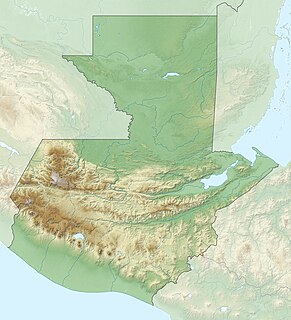 W
WThe Ixcoy Formation is a geologic formation in Guatemala. It preserves fossils dating back to the Cretaceous period. The upper part of the Ixcoy Formation is laterally equivalent with the Campur Formation of the Petén Basin in northern Guatemala.
 W
WJuana Lopez refers to both the uppermost member of the Carlile Shale formation and to the environment that caused it to form. This unit is calcareous sandstone of Turonian age, Upper/Late Cretaceous series in the southern and western Colorado and northern and central New Mexico.
 W
WThe Kaskapau Formation is a geological formation in North America whose strata date back to the Late Cretaceous.
 W
WThe Lisandro Formation, alternatively known as the Cerro Lisandro Formation, is a Late Cretaceous geologic formation with outcrops in the Neuquén, Río Negro and Mendoza Provinces of Argentina. It is the youngest formation within the Río Limay Subgroup, the lowest section of the Neuquén Group. Formerly that subgroup was treated as a formation, and the Lisandro Formation was known as the (Cerro) Lisandro Member.
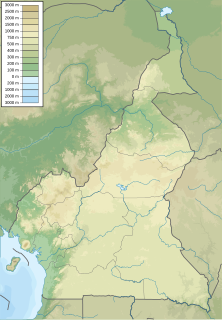 W
WThe Logbadjeck Formation, also known as the Mungo River Formation, is a Late Cretaceous geologic formation in Cameroon. It is Turonian to Campanian in age, and represents a marine depositional environment. Pterosaur fossils have been recovered from the formation.
 W
WThe Loma Gorda Formation is a fossiliferous geological formation of the Upper Magdalena Valley (VSM) and surrounding Central and Eastern Ranges of the Colombian Andes, extending from Cundinamarca in the north to Huila and easternmost Tolima in the south. The uppermost unit of the Güagüaquí Group, a sequence of laminated siltstones and shales, dates to the Late Cretaceous period; Turonian to Coniacian epochs, and has a maximum thickness of 167 metres (548 ft).
 W
WThe Mancos Shale or Mancos Group is a Late Cretaceous geologic formation of the Western United States.
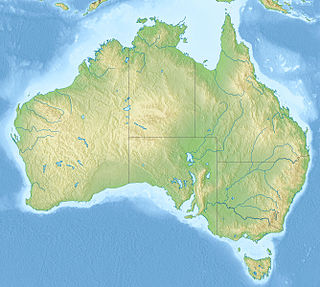 W
WThe Molecap Greensand is a Late Cretaceous geologic formation, located in the state of Western Australia in Australia.
 W
WThe Moreno Hill Formation is a geological formation in western New Mexico whose strata were deposited in the Late Cretaceous. Dinosaur remains are among the fossils that have been recovered from the formation.
 W
WThe Río Limay Subgroup is a geological unit of the Neuquén Group in the Neuquén Basin of Neuquén, Mendoza and Río Negro Provinces, northern Patagonia, Argentina. The strata date back to the Late Cretaceous (Early Cenomanian to Early Turonian. The Río Limay Subgroup overlies the Lohan Cura Formation, separated by an unconformity dated to 98 Ma. Dinosaur remains are among the fossils that have been recovered from the formations it contains.
 W
WThe Río Neuquén Subgroup is a geological subgroup in the Neuquén Basin, Neuquén Province, Argentina, whose strata date back to the Late Cretaceous. The subgroup, formerly defined as a formation, is the middle unit of the Neuquén Group and contains the Plottier, Sierra Barrosa Formation, Los Bastos Formation, and Portezuelo Formations. The subgroup overlies the Río Limay Subgroup and is overlain by the Río Colorado Subgroup. Dinosaur remains are among the fossils that have been recovered from the formation.
 W
WThe Santos Formation is a geological formation of the Santos Basin offshore of the Brazilian states of Rio de Janeiro, São Paulo, Paraná and Santa Catarina. The predominantly conglomeratic sandstone formation with interbedded shales dates to the Late Cretaceous period; Cenomanian-Maastrichtian epochs and has a maximum thickness of 2,700 metres (8,900 ft).
 W
WThe Simijaca Formation (Spanish: Formación Simijaca, K2S, Kss) is a geological formation of the Altiplano Cundiboyacense, Eastern Ranges of the Colombian Andes. The predominantly mudstone formation dates to the Late Cretaceous period; Turonian and Cenomanian epochs, and has a maximum thickness of 693 metres (2,274 ft).
 W
WThe Tres Hermanos Formation is a geologic formation in central and west-central New Mexico. It contains fossils characteristic of the Turonian Age of the late Cretaceous.
 W
WThe Trichinopoly Group is a geological formation in India whose strata date back to the Late Cretaceous. It lies between the Ootatoor and Ariyalur Groups. It is broad in its southern extremity but thins as it gradually proceeds northwards as it ultimately meets the Ariyalur Group. Dinosaur remains are among the fossils that have been recovered from the formation.
 W
WThe Tupuangi Formation is a geological formation in New Zealand, only exposed on Pitt Island in the Chatham Islands. It is the oldest exposed sedimentary unit within the archipelago. It was deposited in terrestrial deltaic to paralic conditions during the Cenomanian to Turonian stages of the Late Cretaceous. During this time period the Chatham Islands were attached to Antarctica within the Antarctic Circle, at approximately 70° to 80° south. The lithology consists of a basal conglomerate, which grades into sandstone and carbonaceous siltstone in the upper part of the formation. The formation is notable for its fossil content, including many varieties of plant, including abundant conifers, including members of Araucariaceae, Podocarpaceae, Cupressaceae, Cheirolepidiaceae, as well as Ginkgo and Ginkgoites. Other flora includes mosses, ferns, liverworts and lycopodians. Compression fossils of insects have been found including members of Carabidae and Buprestidae, and acritarch Introvertocystis. Amber is also known from the deposit associated with the conifer Protodammara reimatamoriori, a member of Cupressaceae.
 W
WThe Ulansuhai Formation is a geological formation in Inner Mongolia, north China. Dinosaur remains are among the fossils that have been recovered from the formation.
 W
WThe Valle de Ángeles Group is a geologic group in Honduras. It preserves fossils such as ornithopod and iguanodontid dinosaurs dating back to the Late Albian to Early Turonian stages of the Cretaceous period.
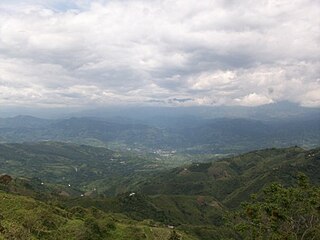 W
WThe Villeta Group is a geological group of the Eastern Ranges of the Colombian Andes, to the west of the Altiplano Cundiboyacense. The group, a sequence of shales, limestones and sandstones, is subdivided into various formations; Conejo, La Frontera, Simijaca, Hiló, Pacho, Chiquinquirá, Capotes, Socotá, El Peñón, and Trincheras, and dates to the Cretaceous period; Aptian-Coniacian epochs. The group stretches out across four departments, from Huila in the south, through Cundinamarca and Boyacá to southern Santander in the north. The upper part of the Villeta Group is time-equivalent with the La Luna Formation of the Middle Magdalena Valley (VMM) and Sierra Nevada del Cocuy, the Oliní and Güagüaquí Groups of the Guaduas-Vélez synclinal and the Chipaque Formation of the Altiplano Cundiboyacense. The lower part has been correlated with the Simití, Tablazo and Paja Formations of the VMM, the upper Tibasosa, Une and Fómeque Formations of the Altiplano Cundiboyacense and the Capacho, Aguardiente, Tibú-Mercedes and upper Río Negro Formations of the Sierra Nevada del Cocuy.
 W
WThe Winton Formation is a Cretaceous formation in central-western Queensland, Australia. It is late Albian to early Turonian in age, so straddles the Cenomanian-Turonian boundary.
 W
WThe Xiaguan Formation is a Turonian to Campanian geologic formation in Henan Province of China. Dinosaur remains are among the fossils that have been recovered from the formation.
 W
WThe Zhirkindek Formation is a Late Cretaceous geologic formation in Kazakhstan. The primary lithology is sand with interbeds of clay and silt, and represents a coastal to coastal marine environment. The formation has produced numerous fossils, including Lindholmemydid and Trionychid cryptodires, indeterminate remains of dinosaurs and an indeterminate species of pterosaur Azhdarcho.